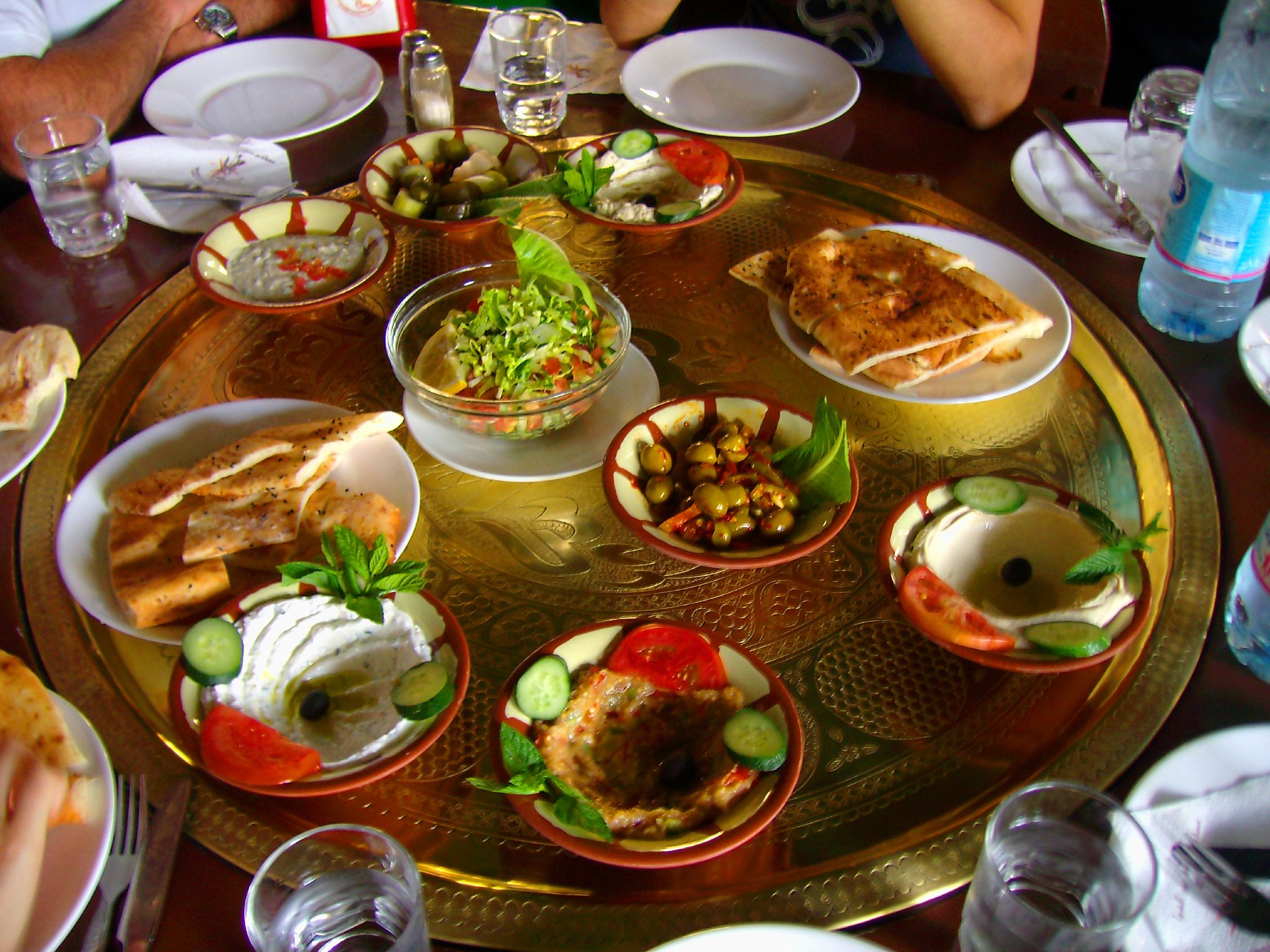
Customs and Cuisine of Jordan
For centuries Jordan has been a highway between Europe, Asia and The Middle East. This influx and mixing of people over the centuries has contributed to a diverse food culture. Many dishes, such as hummus, baba ghanoush, tabbouleh, falafel and kebabs all share the same Arabic and Mediterranean culinary roots.
The traditional Jordanian breakfast is a bowl of hot fuul (boiled fava beans mashed with lemon juice, olive oil and chopped chilis), and mopped up with fresh-baked pita. The staple street snack in the Middle East is falafel, small balls of a spiced chickpea paste deep-fried and served stuffed into pita, along with some salad, tahini, and optional hot sauce. Up and down the country you’ll also find shwarma stands.
If dining in a restaurant, mezze plates are typically rolled out before larger main dishes, so be sure to save room. Main courses are almost entirely meat-based. Good fish is rare, and pork is forbidden under Islam.
Without argument, the premier national dish is Mansaf, and its preparation is taken very seriously. It is served on very special occasions, weddings especially. Chunks of boiled lamb or mutton are served on a bed of rice, with pine nuts sprinkled on top and a tart, creamy sauce of jameed (pungent goat’s-milk yoghurt) on the side to pour over.
Most Arabic sweets are packed with enough sugar, syrup, butter and honey to make your teeth ache. But they are generally very small bites and often consumed with coffee or tea for an afternoon snack. Fresh fruit is the traditional way to round out a meal. Street markets display fresh fruits, including apples, oranges, mandarins, peaches, grapes, dates and pomegranates.
The main focus of every Jordanian village is a coffee house, where friends and neighbors meet. The national drink is tea; a strong, dark brew served scalding-hot and milk-less in small glasses. But coffee comes in a close second. Turkish coffee is what you’ll come across most often. Made by boiling up cardamom-flavored grounds in a distinctive long-handled pot, it’s served in small cups along with a glass of water as chaser.
Drinking alcohol is forbidden under Islam. Alcohol is widely available, but you have to look for it.
Dining Etiquette:
Jordanians serve family, friends, and guests with great pride in their homes; no matter how modest their means. A “Jordanian invitation” means that you are expected to bring nothing and eat everything.
Meal times are often a communal affair with numerous plates served at once and people taking the portion of each dish closest to them. In traditional settings, eating with the right hand is the acceptable method, and men and women dine separately.
You’re likely to be eating with your fingers at least some of the time. Flaps or pockets of flat bread count as knife, fork and spoon – torn into pieces for scooping up dips, mopping up sauces, tearing meat off the bone and constructing personal one-bite sandwiches.
Sources:
http://www.roughguides.com/destinations/middle-east/jordan/food-drink/
http://uncorneredmarket.com/jordan-food/
View Recipes from Jordan
Jordan
